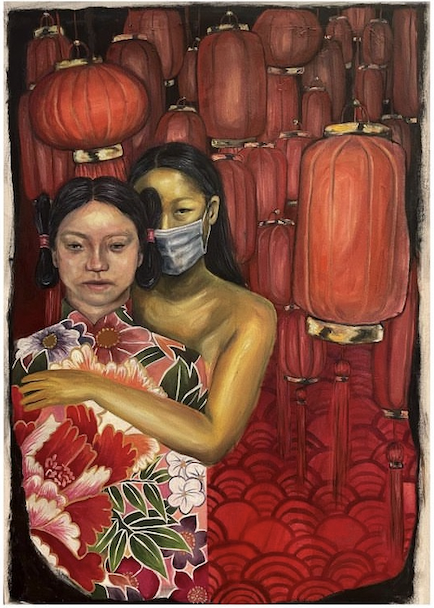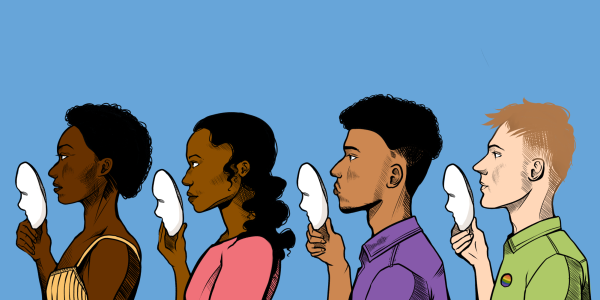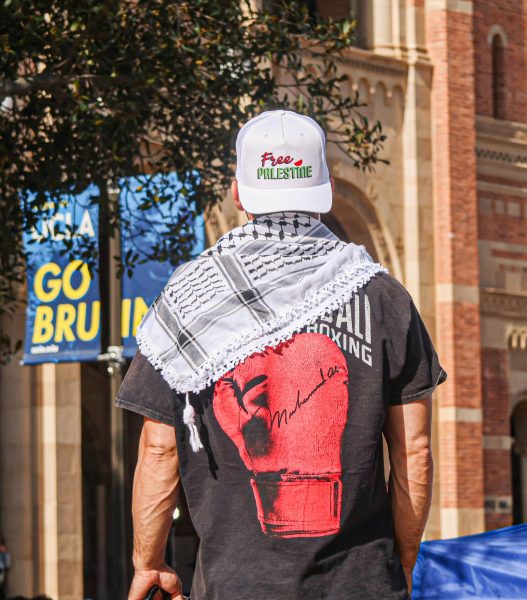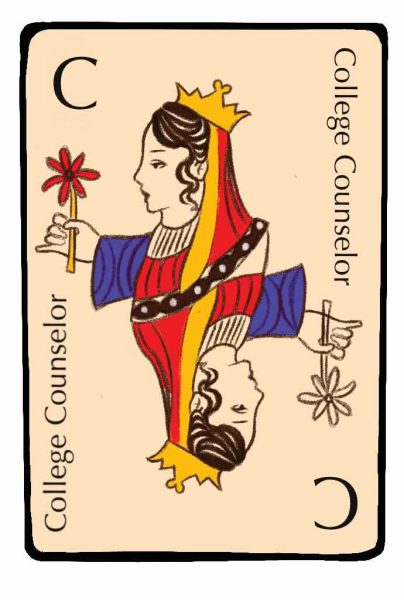Advancing Asian Leaders
In honor of Asian Pacific American Heritage Month 2023, students and faculty analyze Asian leadership in the school community.
May 25, 2023
31 years after the United States Congress officially designated May as Asian Pacific American Heritage (APAH) Month in 1992, students elected four Asian-identifying Senior Prefects for the 2023-2024 school year, coinciding with the APAH Month 2023 theme of Asian leadership designated by the Federal Asian Pacific American Council.
The four electees, Ryan Cheng ’24, Glory Ho ’24, Elizabeth Johnstone ’24 and Nyla Shelton ’24, will helm a council currently led by Simon Lee ’23 and Kimura, who made history as the first pair of Asian-identifying Head Prefects.
Kimura said she is excited for school leadership to be in the hands of a group that can understand a diverse array of perspectives.
“I’m definitely thrilled they were elected,” Kimura said. “Not just [because] they’re Asian American, but that they are very clearly individuals who are dedicated to inclusivity.”
Kimura, who is half-Japanese and half-Chinese, said her multicultural identity gives her insight into different aspects of the school community.
“It’s been nice being able to see the intersection between those two Asian American communities at school,” Kimura said. “How this translates to leadership is whenever I plan events or speak to school communities, I like to come at it from that lens of intersectionality.”
Though she said there is prominent Asian participation in leadership positions at the school, Kimura said diversity is always a goal.
“In terms of student government, there’s always been a pretty hefty representation of Asian Americans,” Kimura said. “It’s great to have people that I can identify with on [Prefect Council], but I do wonder sometimes if we’re a little underrepresented in terms of diversity of other cultures on [Prefect Council]. I’m not sure where that comes from, or why we usually have a majority of Asian Americans in student leadership, but I wonder if we can find ways to kind of promote more diversity within our leadership groups.”
Teachers discuss their experiences with Asian leadership
Unlike Kimura, Science Teacher Nancy Chen said she experienced very little Asian representation in her hometown community.
“I was [part of] the only Asian family in my town,” Chen said. “In college, Asians were only about five to seven percent of students, and most of them were international students, so they weren’t really going for the leadership roles. In every community I’m in now, I do see that Asians are more willing to take leadership roles.”
Chen said despite underrepresentation, the tight-knit Asian American community at her college helped her enter into leadership roles at the school.
“In college, Asians kind of supported each other, because there weren’t that many of us,” Chen said. “Whenever I was trying to go for a leadership role, the senior Asians actually helped support me and guide me to get those positions.”
Even with more exposure to diversity, Chen said she is still trying to fully understand her Asian American identity.
“I haven’t really found a good balance in my Asian identity, because as humans, I think we all try to fit into the society we’re in,” Chen said. “So, I just kind of observe the room I’m in and see how much of my identity I can put out, or how comfortable I am with the people I’m with right now. In the science department, since I’ve worked here for so long, I’m more comfortable showing my Asian identity than potentially in other places.”
Asian student leaders in the school community discuss their interactions with leadership
Despite feeling very connected to her Asian identity, Asian Students in Action (ASiA) leader and incoming Senior Prefect Glory Ho ’24 said she is always learning about new aspects of the Asian experience.
“My Asian identity is at the forefront of my leadership, and Asian identity is so broad, so I constantly learn new things as a leader and in our discussions,” Ho said. “I [have] always been somebody who was very comfortable in my identity as an Asian student, but it’s easy to think of the Asian experience as homogenized. Every Asian identity is different in ways that I never expected really, so I try to keep an open mind in terms of what exactly it means to be Asian and how that has affected people differently.”
Ho said stereotypes of high-achieving Asian Americans in leadership positions often diminish Asian students’ achievements.
“At prep schools like ours, there’s that stereotype of the Asian who’s just doing things to fill up their application and be that model student,” Ho said. “Honestly, I’ve always been wary of coming off like your typical Asian student who’s trying to fill up their resume. Because our school is like a prep school, the model minority myth can apply to a lot more [students], and it’s like you are working against that and showing that you are more than an application.”
Ho said she has not encountered a diverse array of Asian teachers.
“I never really see Asian teachers outside of STEM courses,” Ho said. “But in ninth grade, I had [English Teacher Catherine] James as my teacher, and she’s Asian. I immediately really was able to connect with her. For English, which is a more vulnerable subject, I think it was easier to reach out and to just feel more connected to her from the start.”
Like Ho, Diversity, Equity and Inclusion (DEI) Coordinator Reb Limerick, who identifies as white, said employing diverse faculty and staff is crucial in helping students feel more comfortable in their identities.
“It’s important to continue to hire not only more faculty and staff of color, or who are queer or any identity that will help students of marginalized identities feel more supported and represented on campus, but to hire people who are committed to diversity and supporting students at their core,” Limerick said. “For fellow teachers who are not AAPI-identifying, I would recommend they take advantage of the incredible opportunities at HW to engage and educate themselves on Asian American culture and history.”
Limerick said the school has made significant progress in amplifying Asian voices within the community this year.
“This year, three of the five [Student Leaders for Inclusion, Diversity and Equity (SLIDE)] Co-Chairs identify as Asian-American,” Limerick said. “As student leaders of DEI work on campus, they bring their multiplicity of identities to the work and work to uplift students of all marginalized identities but being able to advocate for Asian students from an Asian perspective is powerful. Also, Melody Lee became the Upper School Department Head of Science [this year].”
Beyond the school community, Junior Prefect Nyla Shelton ’24 said she has observed increased Asian representation in the media.
“This is an especially unique time with everyone watching Asian leaders blossom and become really popular among Generation Z and in the youth, and I feel like that’s really great,” Shelton said. “I’m always excited to see if there’s a new movie with Asian representation. I do have specific Vietnamese actors that I really love and resonate with and seeing them come into the spotlight is always great.”
Shelton said she has learned to embrace her Asian American identity more in leadership roles.
“Going to this school, I’ve definitely grown more confident with my identity and gotten more involved with the ASiA affinity group,” Shelton said. “In the sense of my leadership experience, not only do I own that as a larger part of my identity, but I also think I am innately more aware, or I try to be more conscious of decisions that Prefect Council makes and how to be as inclusive as possible. I am very consciously aware of what initiatives we’re doing and how best to make other students around feel comfortable just because of my experience as an Asian American.”
Multiethnic Inclusion x Diversity Club (MIxD) leader and SLIDE member Nilufer Mistry Sheasby ’24, who is South Asian, said she feels that there is less understanding of South Asian culture than of East Asian culture within the community.
“The biggest distinction between East Asian and South Asian culture is that East Asian culture has very much become something that’s super celebrated, and I think has almost become cool or trendy and the status quo right now, whereas you don’t see that same thing with South Asian culture,” Mistry Sheasby said. “I feel like it’s relatively unknown. It’s not as explored, and it doesn’t get as much airtime.”
Mistry Sheasby said she recognizes a lack of diversity among faculty and staff, which she said has made exploring her South Asian identity more difficult.
“There are very few South Asian faculty at the Upper School, which makes it a little bit hard to touch base with people about what I’ve experienced,” Mistry Sheasby said. “When I encounter leadership struggles, I’ll usually go to my mom because she’s a South Asian woman, but I can’t think of anyone else at the school who I could really go to and would just understand what I’ve been through and what the challenges are. Even with the counseling team, it’s really hard, because sometimes when leadership struggles come up, and I try to explain them, there are not a lot of real ways to put that into words to make people who aren’t part of the South Asian community understand and not have it become super tricky.”
Mistry Sheasby said she does not learn about Asian leadership in her classes.
“I don’t think we really talked a lot about Asian leaders in class [whether they be] East or South Asian,” Mistry Sheasby said. “East Asian culture is often commodified, and the stories behind it are usually ignored. There’s definitely an element of both East Asians and South Asians really struggling a lot with culture.”
Mistry Sheasby said people should be more aware of the pressure on the Asian American community at the school and how it affects leadership.
“The election of four Asian Senior Prefects really says a lot about our school environment and our school community and about how far we’ve come in terms of looking beyond differences in race and ethnicity,” Mistry Sheasby said. “It’s super exciting, but it also does say a lot about something that we haven’t really fixed for East Asians and South Asians alike, which is just really a crippling, overwhelming level of pressure.”
Mistry Sheasby said there are more expectations for all Asian students to be more high-achieving in the community due to the model minority myth — the expectation for certain minorities, like Asians, to excel socioeconomically, according to NPR.
“The model minority myth is perpetuated not just by whites, but also people in the Asian community,” Mistry Sheasby said. “There is an expectation to excel and to succeed and that’s just the norm. For a lot of white individuals, even at this elite school, to gain respect amongst their peers, you want to be likable, you want to be cool and you want to be trendy, but for Asians, there is one added level that [you have to be] smart. It’s just a default, and this is perpetuated by whites and your Asian peers. If you’re Asian, if you want to be one of the cool Asians, you gotta be getting straight A’s, you gotta be in all the best classes and you gotta be achieving everything and doing it at a high level. It’s just one more box that you have to check that your white peers don’t have to check.”
Asian-identifying incoming Senior Prefect discusses her experience as an Asian leader
Incoming Senior Prefect Elizabeth Johnstone ’24 said the large and diverse Asian student presence at the school helps to challenge the model minority myth.
“At a school like Harvard-Westlake, it’s great that we have such a big Asian population to disprove the [model minority] myth, because you see different types of people doing a bunch of different activities, from all walks of life and all doing different things,” Johnstone said. “Exposure to a bunch of different Asian Americans helps to disprove the model minority myth.”
Johnstone said she believes that the school is effectively promoting Asian representation.
“Asian Americans still have a long way to go, but at Harvard-Westlake, we do a really good job with representation,” Johnstone said. “Because Asians and Asian Americans are a pretty big minority, it’s quite difficult, when you’ve got so many people who identify as Asian in a community, not to have some Asian leaders at some point, which is a good thing.”









































